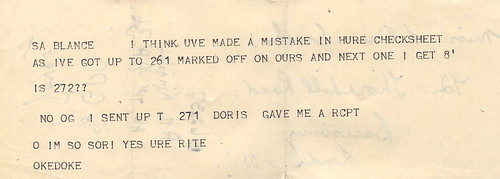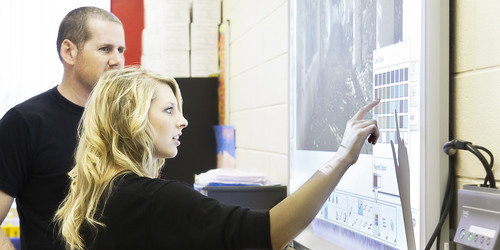Taking this EME2040 online summer A class for 6 weeks had me very nervous in the beginning, and even stressed at times. I also was doing another online teaching class as well to finish my teaching requirements to try and get into the program, so I thought it was just going to be too much for me to handle at a point. I planned ahead at times sense I also had another class, and it just made it easier for me to focus, get things done days before they were said to be due, and because of that, it made it a little more stress free for me!
The textbook, "Transforming Learning With New Technologies", was very informative for me to read, and it gave me a considerable amount of knowledge about technology in general like making hyperlinks, embedding videos/pictures, making websites, lesson plans etc., and how it can also be positively used in the class room when educating students.
Throughout the 6 weeks we did many assignments and activities that were very fun to do and I learned a lot about using technology in many positive ways that I did not know before.
Many of the activities we did throughout the 6 weeks were blogs that we made on blogger. Here is a link to all my blogs if you would like to check them out! The blogs that we had to make were based on what we read throughout the week and we had to talk about 3 topics that we thought were interesting that we wanted to reflect on. We needed to quote things from the textbook or even websites that related to what we were writing about and also how we would use what we wrote about in the classroom with our future students. One blog in particular that I enjoyed making was actually my very first blog. I liked this blog a lot because, this class was the first time I had ever made one before! You can see my very first blog on the link I embedded above.
 |
| Photo credit to jonwatson on Flickr |
Some assignments and even group projects that I did in this class, to me, were the most beneficial that I learned about and I am going to start using them when I study to become a teacher, and even when I am a teacher with my students. We made a lesson plan, a wiki page, an eportfolio, a rubric to evaluate a children's website, and also a webquest. Before this class, I never knew how to do any of those things; now I do. The eportfolio was my most favorite assignment I made because I was able to write like I was actually a teacher teaching at an elementary school. It got me excited to think that in just a few years, I will not have to imagine being one anymore sense I will actually be one. If you want to start making websites, Weebly is an awesome website to start on so click on this link. For an example of what a Weebly website looks like, here is my website I recently just made. Another assignment that I enjoyed doing was the group lesson plan. At first I was a little nervous about doing a group lesson plan because I did not know who was going to do the work and who was not gonna put in much effort at all sense we had never met in person before. In past group projects, especially in high school, I would always be in groups with people who did not put in much effort, and I was the person who ended up doing most of the work. We only talked through canvas, but luckily, we all did our fair share with the lesson plan and we got a good grade on it! I am looking forward to doing more group projects in the future classes I will be taking! Making blogs and the many other assignments/activities I learned to do while being in this class has taught me many things that I did not know how to do before that I can now use with the use of technology when making lesson plans etc., for my future students. With that said, I also will always make learning in my classroom fun!
 |
| Photo Credit to Svetlana Gladkova on Flickr |
Connections to learning outcomes
From reading the syllabus under the learning outcomes and assessment, I found my self shaking my head yes to most of the items on the list that I learned from being in this class. Communication was always used effectively when it came to group projects, and also when we had a question that we needed answered by the teacher.Critical thinking was down in particular when we evaluated the children's website that we had to do in the beginning of the semester. Technology/information management was used when we learned how to make blogs, websites, lesson plans etc. I am sure we learned and used one of the other 2 or even both of the ones I did not mention on the list through this small semester, but I thought the 3 I explained were more important to talk about sense we constantly used them in our assignments and I saw myself using them a lot.
Suggestions and feedback
I know you may be looking for suggestions and feedback from me for ways to improve your class, but I honestly can not think of any improvements that I think you need to know of to change anything about your class/assignments. I liked how you gave us a week to get all our assignments done, gave us lengthy feedback on all of our work, and with the feedback, you told us how to improve in areas so we do not make the same mistake next time. Maybe if anything, you could have your future students make more websites sense I thought they were very fun to make and it tied into everything that we have learned like adding creative commons pictures, videos, hyperlinks etc. Besides that I really can not think of any improvements. I enjoyed this class a lot, thank you for teaching me!
References:
H. (2014, February 01). Anti-bullying ASL video - Read All About It. Retrieved June 20, 2016, from https://www.youtube.com/watch?v=yBTVmPoAMbQ
Weebly is the easiest way to create a website, store or blog. (n.d.). Retrieved June 20, 2016, from https://www.weebly.com/





